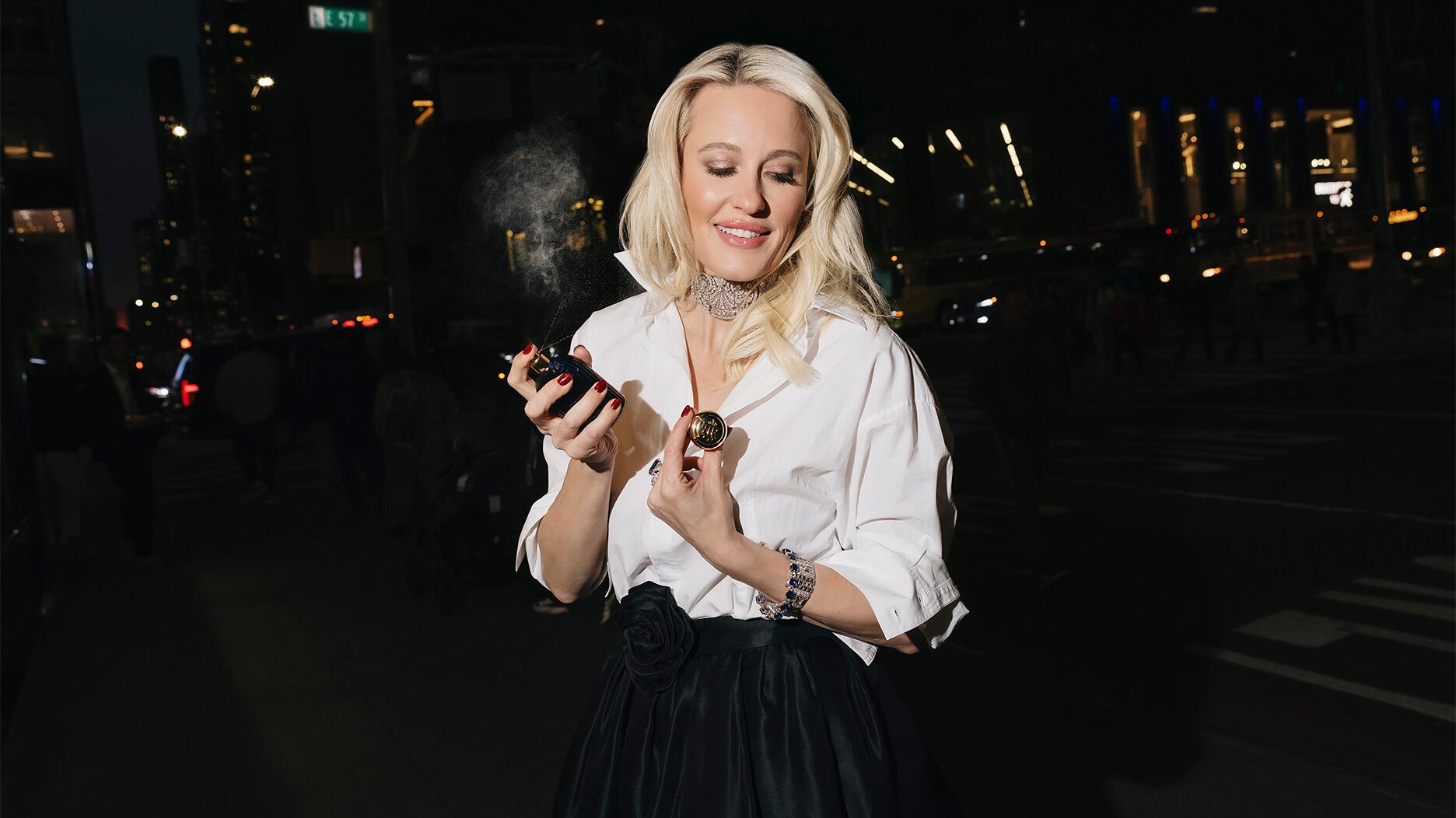Piece of the Week: A Haunting Piece of Mourning Jewelry
The pendant, circa the late 1700s, likely was commissioned to remember a loved one who died young.

This pendant, circa the late 1700s, has a low-karat gold frame surrounding a sepia ink depiction of an urn resting atop a pillar that reads, “Safe will I keep these dear remains.”
On the right side of the image a woman is resting her arm on the pillar, while the left side shows an angel cutting a rose, a reference to the idiom, “nip’d in the bud.”
An oval-shaped piece of bone serves as the canvas for this piece of mourning jewelry.
It’s likely this pendant was commissioned after the death of a young person because of the symbolism stemming from the rose, which was cut before it had the chance to fully grow, KIL N.Y.C. CEO Konstantinos I. Leoussis explained in an email to National Jeweler.
The antique piece, which originally was a clasp before being turned into a pendant, comes from the Georgian era, when mourning jewelry was common.
Pieces were created as tributes to deceased loved ones as a way to honor their memory and cushion the loss.
Urns were often depicted in these pieces as a symbol of the soul’s departure from the body. Skulls and weeping willows were frequently seen in mourning jewelry as well.
Portraits typically were painted on ivory or enamel and encased in silver or gold, like this pendant, and occasionally surrounded by pearls to symbolize tears.
In the Victorian period, human hair was incorporated into mourning jewelry as a way to hold on to a physical piece of the deceased while symbols were used less, replaced by portraits of the deceased.
This mourning pendant is available for $1,800 at KIL N.Y.C.
To view more antique mourning jewelry, visit KIL N.Y.C.’s website.
The Latest

In its annual report, Pinterest noted an increase in searches for brooches, heirloom jewelry, and ‘80s luxury.

Starting Jan. 1, customers can request the service for opal, peridot, and demantoid garnet.

The 111-year-old retailer celebrated the opening of its new location in Salem, New Hampshire, which is its third store in the state.

How Jewelers of America’s 20 Under 40 are leading to ensure a brighter future for the jewelry industry.

The new catalog features its most popular chains as well as new styles.


The filmmaker’s personal F.P. Journe “FFC” prototype was the star of Phillips’ recent record-setting watch auction in New York.

The new location in the Design District pays homage to Miami’s Art Deco heritage and its connection to the ocean.

Roseco’s 704-page catalog showcases new lab-grown diamonds, findings, tools & more—available in print or interactive digital editions.

Inflations, tariffs, and politics—including the government shutdown—were among consumers’ top concerns last month.

“Longtime favorite” presenters, as well as first-time speakers, will lead talks and workshops at the annual event in Tucson next year.

Silas Smith of Meridian Metalworks won the challenge with his pendant that blends Australian and American landscapes.

The sale of the 31.68-carat, sunset-hued stone was part of Sotheby’s first series of events and auctions in Abu Dhabi.

Most customers who walk into your store this month have made up their minds. Your job is to validate their choice, Emmanuel Raheb writes.

The collection features characters and motifs from Ukrainian folklore, including an enchanted mirror and a magic egg.

MatrixGold 3.11, the newest version of the jewelry design program, offers more flexibility, precision, and creative control.

The pavilion will be part of the 2026 JA New York Spring show, scheduled for March 15 to 17.

Kadet, a 1994 National Jeweler Retailer Hall of Fame inductee, helped grow the family-owned retailer in the Chicago area and beyond.

Billed as the world’s smallest wearable, Lumia Health’s new smart earrings have a health tracker subtly embedded in the back.

Don’t let those with December birthdays feel blue. Help them celebrate their month with blue zircon, turquoise, and tanzanite.

A choice that’s generated a lot of commentary, Pantone says “Cloud Dancer” marks a fresh start and encourages relaxation and creativity.

The manufacturer’s holiday campaign features a gift guide filled with trending designs and jewelry that can be personalized.

The man was charged with theft, accused of ingesting the necklace while in a jewelry store in Auckland, New Zealand.

The Florida independent expanded its store from 8,000 to 14,000 square feet, fulfilling the vision of its late co-founder, Jim Dunn.

Sponsored by De Beers Group

The classic 5600 series G-Shock has been scaled down to about a tenth of its size, becoming a fully functioning watch ring.

The association’s annual conference and gala will take place Feb. 4, 2026, during the Tucson gem shows.

The January show will include a workshop for jewelry retailers on implementing AI to strengthen their businesses.






























